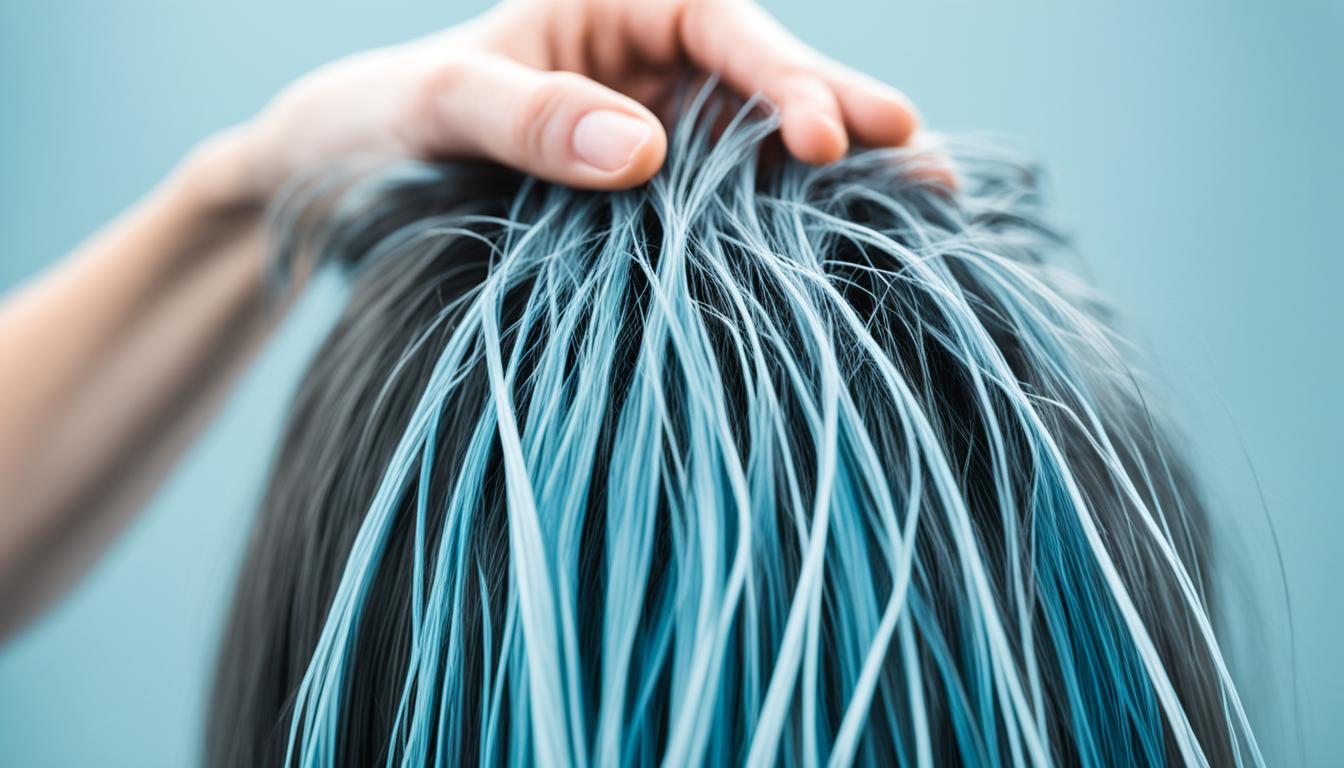Hair-pulling disorder, known as trichotillomania, is when a person pulls out their own hair. They do this from the head, eyebrows, or other body parts. This happens when a person is stressed or anxious. But, it can damage hair and cause baldness.
The signs of trichotillomania are pulling hair often, feeling better after they pull, and losing a lot of hair. Some people even eat the hair they pull. We don’t know exactly what causes it. But, things like family history, being in your teens or early twenties, and feeling stressed can make it more likely.
It’s important to find and treat trichotillomania early. Ways to help include using things like fidget toys, deep breathing to calm stress, and wearing hats that make it hard to grab hair. Effective treatments are therapy to change behavior, learning stress management, and joining support groups. For hair loss, stem cell therapy is a new and promising option.
Key Takeaways:
- Hair-pulling disorder, known as trichotillomania, is a condition where people can’t stop pulling their hair out.
- Things like family history, being young, and stress play a role in getting trichotillomania.
- Getting help early is key to overcoming trichotillomania.
- To stop hair pulling, some strategies include using fidget toys, learning how to manage stress, and wearing special hats.
- Treatments for trichotillomania include therapy, learning stress management skills, and support groups. Stem cell therapy for hair loss is also becoming an option.
Understanding Trichotillomania: Causes and Impact
Trichotillomania, or the hair-pulling disorder, affects between 0.5 and 3% of people. It often starts when a person is a child, but can carry on into adulthood. Women are more likely to experience this in their grown-up years.
It frequently comes along with other mental health problems like anxiety, depression, and ADHD. Such issues can make life tough, leading to feelings of shame, guilt, and low self-esteem. They can also cause someone to pull away from others.
Trichotillomania doesn’t just cause emotional pain. It can also put a strain on a person’s finances. This happens when individuals spend a lot on covering up hair loss. Plus, constantly pulling out hair can damage the hair’s roots, leaving permanent bald spots.
The exact reasons behind trichotillomania are still unclear. Researchers think both genes and life experiences have a part to play. People with a family background of the disorder might be more at risk. Stress and anxiety, too, can make the hair-pulling urge worse.
Dealing with trichotillomania demands early help. With professional support, people can find ways to manage the condition. This can lead to a better quality of life.
Co-occurring Disorders in Trichotillomania
| Common Co-occurring Disorders | Prevalence in Trichotillomania |
|---|---|
| Anxiety Disorders | High |
| Depression | High |
| ADHD | High |
| PTSD | High |
| OCD | High |
| Skin-picking Disorder | High |
| Substance Use Disorder | High |
Treatment Options and Breakthroughs in Stem Cell Therapy
Trichotillomania is a chronic illness needing early diagnosis and care. The first-line treatment is cognitive-behavioral therapy (CBT). This method lets people change their thoughts and actions related to pulling hair. CBT includes practices like stopping bad habits, controlling what triggers you, and learning how to relax. Dealing with stress well, like using deep breaths and staying mindful, also helps. Support groups are fantastic for those with hair-pulling issues as they provide understanding and support.
In the last few years, stem cell therapy has made progress in treating hair loss from trichotillomania. This treatment uses a person’s own stem cells to grow hair. It’s a new way to repair hair roots damaged by pulling. Stem cell therapy is a hopeful option for those with trichotillomania. It helps people who lost hair permanently and are looking for effective treatments.
If you are noticing signs of trichotillomania, it’s vital to get professional help. There are various treatments available to help manage this disorder effectively.

